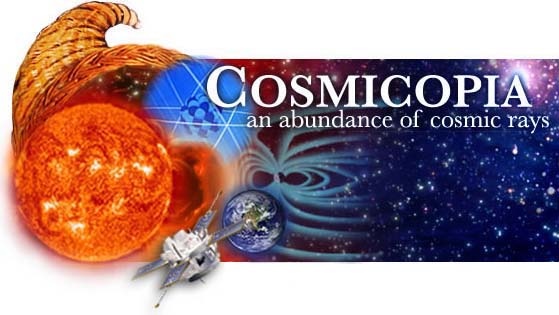
Glossary:
S and T
- Satellite
- An object that revolves around a larger object. Planetary moons are natural satellites.
- Shock
- A break in pressure, density, and particle velocity, carrying forward through a medium such as plasma.
- Solar
- Having to do with the Sun.
- Solar Cell
- Also known as a photovoltaic cell. A solar cell is a battery that uses energy from the Sun as its source of energy.
- Solar energetic particles (SEPs)
- Particles that are associated with solar flares. They move away from the Sun due to plasma heating, acceleration and many other forces.
- Solar flare
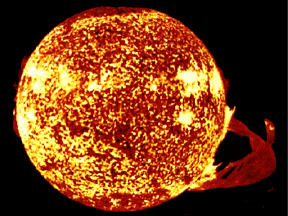 An enormous explosion of gas in the
solar atmosphere resulting in a
sudden burst of particle acceleration, the heating of plasma and the eruption of large
amounts of solar mass. This image of a solar flare is courtesy of
NASA JSC.
An enormous explosion of gas in the
solar atmosphere resulting in a
sudden burst of particle acceleration, the heating of plasma and the eruption of large
amounts of solar mass. This image of a solar flare is courtesy of
NASA JSC.- Solar minimum
- The lowest level in solar activity. It occurs between solar maxima.
- Solar plumes
- Long, feathery jets that expel a high-speed stream of electrified gas from the corona. They extend from near the solar poles to more than 13 million miles into space.
- Solar system
- A star, and its associated planets and their moons, asteroids, comets, and meteoroids, and interplanetary dust and gas that are held by the star's gravity and orbit around it.
More about the solar system...
- Solar wind
- The plasma of charged particles coming out of the Sun in all directions at supersonic speeds.
- Solar wind termination shock
- The shock caused by the sudden slowing of solar wind as it approaches the heliopause.
- Space
- The area between all of the bodies in the universe. It is not empty! It contains magnetic fields, electromagnetic radiation, gases, dust and other particles.
- Space weather
- The effects on Earth produced by solar activity which causes changes in energetic particle flux due to magnetic storms from the Sun.
- Spectrometer
- An instrument that separates measurements into different energies or
frequencies, producing a spectrum.
- Spectrum
- (plural = spectra) The distribution of energy wavelengths and frequencies.
More about the energy spectrum...
- Speed of light
- The speed of light in a vacuum (the way the term is normally used) is defined as about 300,000,000 m/s (186,000 miles/second). It is considered to be the fastest speed anything can reach. It is expressed as "c" in Einstein's famous equation: E=mc2
- Star
 A glowing ball
of gas that uses a nuclear
reaction to produce energy.
This image from the Hubble Space Telescope is of star birth in the
Eagle Nebula, November 2, 1995.
A glowing ball
of gas that uses a nuclear
reaction to produce energy.
This image from the Hubble Space Telescope is of star birth in the
Eagle Nebula, November 2, 1995.- Subsonic
- Slower than the speed of sound. In air, the speed of sound is about 340 m/sec (~1100 ft/sec).
- Sun
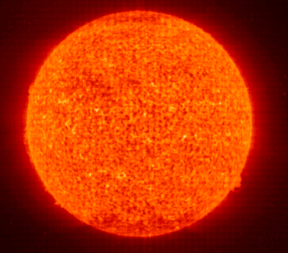 The star at the center of our solar system. It is made mostly of hydrogen and helium with traces of heavier
elements. This image of the Sun is courtesy of SOHO/EIT.
The star at the center of our solar system. It is made mostly of hydrogen and helium with traces of heavier
elements. This image of the Sun is courtesy of SOHO/EIT.- Sunspots
- Temporary magnetic disturbances in the photosphere. They appear dark because temperatures are considerably lower than in surrounding areas.
- Supernova
- (plural = supernovae) The death explosion of a massive star whose core has completely burned out. Supernova explosions can temporarily outshine a galaxy. The outer layers are blasted out in an expanding cloud. This cloud is visible long after the initial explosion fades, and is called a supernova remnant (SNR).
- Supersonic
- Faster than the speed of sound. In air, the speed of sound is about 340 m/sec (~1100 ft/sec).
S
- Telemetry
- Radio signals to and from a spacecraft used to encode and exchange data with a ground station.
- Theory
- An analysis of a set of facts in their relation to one another, offered to explain events.
- Time-of-flight
- An instrument system that uses the difference in travel time through a chamber to separate particles or photons with differing properties. A time-of-flight system is in both the SWIMS and ULEIS instruments onboard the ACE spacecraft.
- Triaxial
- Having to do with three axes (x, y, and z). It is used to describe a three-dimensional system. Triaxial magnetometers are used on the MAG instrument on the ACE spacecraft.
T
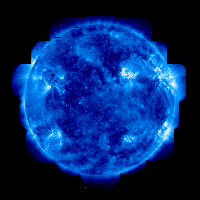

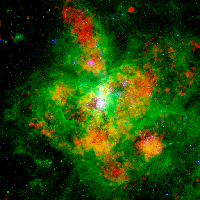
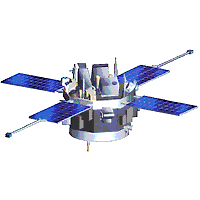
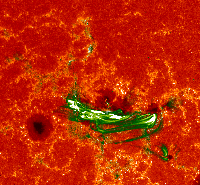
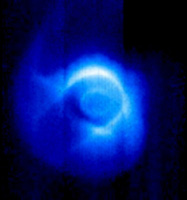
Click on images above to
learn more about them
A service of the Heliophysics
Science Division at NASA's GSFC
Questions and comments to: cosmicopia@cosmicra.gsfc.nasa.gov
Curator: Dr Eric R. Christian, NASA
Responsible NASA Official: Dr Eric R. Christian
Privacy Policy and Important Notices
Questions and comments to: cosmicopia@cosmicra.gsfc.nasa.gov
Curator: Dr Eric R. Christian, NASA
Responsible NASA Official: Dr Eric R. Christian
Privacy Policy and Important Notices

HOME
In the News
History
Ask Us
Great Links
Glossary
Site Map
Search NASA